Microblogging – Flutter the new Twitter
M blg s s ystrdy.
If you can translate this you’ve been spending too much time microblogging.
I’m on Twitter here.
I’m on Facebook here.
My Alumni Facebook group is here.
M blg s s ystrdy.
If you can translate this you’ve been spending too much time microblogging.
I’m on Twitter here.
I’m on Facebook here.
My Alumni Facebook group is here.
Echoing Joseph Campbell’s “Follow your bliss.” Sally Mann recommends you photograph what you love.
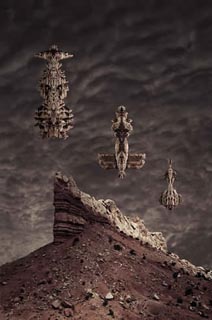
“The stunning presences, within the series Allies, reminiscent of Native American totem poles, African sculpture, or Hindu figurines, had been pursuing me for months. There were, and still are, dozens waiting to find homes. While the majority of the images I had created featured solitary figures, I was drawn to explore the effects of many within a single image — group dynamics … Most leading actors need supporting actors, all save the soloist need accompaniment. But, when supporting actors compete with main actors, the thrust of the drama is confused …”
Read the rest of this statement here.
Read more statements here.
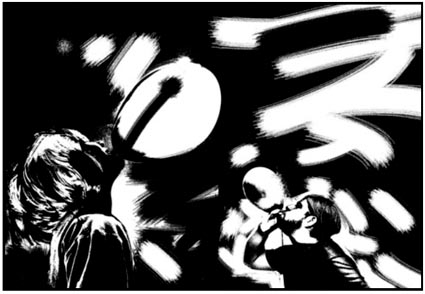
Each summer my we go to Italy to visit my wife’s family. My son and I share point and shoot camera’s and make whimsical interpretations of our experiences there. I’ve learn a lot when I take time to play. I become more versatile and improvisational. I take interest in and see things I never would have seen otherwise. I see things in new ways. The reasons I make different kinds of images and the expectations I have for them become clearer. Play’s valuable. Really valuable. And fun! Take time to play.
Check out my Creativity workshops here.
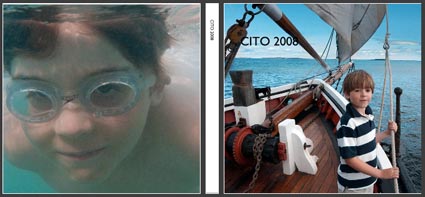
I make family albums every year. If I didn’t have the project and deadline and a commitment to others I might not take the time to find, finish, and print the best images. Without identifying the use for them, I might not make many of the images. Now we have a useful a family record. How important is this? I hear these kinds of things are the things people take with them first if they have to evacuate their houses in a disaster.
One of the keys to the success of any project is to make it easy and fun to do. Make it easy to make the images. I use a point and shoot that’s always nearby. Make it easy to store. I’ve got one place I keep all the material that I organize as it accumulates. Make it easy to process. I use many automation features such as Lightroom’s Export function and Photoshop’s Actions and Image Processor to get the job done fast. Make it easy to produce. Lightroom generates contact sheets in seconds. Blurb makes putting books together a matter of hours not days or weeks; they can even deliver the books to family members.
These days, I imagine some people have online family albums.
What’s your family album like?
Check out Blurb here.
Check out my Creativity workshops here.
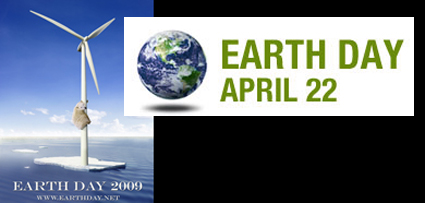
It’s Earth Day! What are you doing today to celebrate? Do something to contribute! Plant a tree. Make a donation. See the new movie Earth released today – $1 goes to planting trees. Or one of so many other things.
Check out the great resources on earthday.net.
Check out Earth Day TV. Hear what Thomas Friedman (Hot, Flat, Crowded) has to say about the current state of affairs, including what he thinks would be good areas to invest in. And many others.
For a list of great environmental organizations see my Environment page.
What will you do today? Comment here!
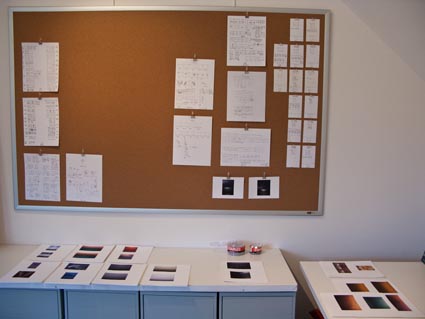
This is my bulletin board. It’s full of ideas I’m working on. Finished images. Snapshots. Clippings. Text. You name it. Frequently seeing the ideas I’m working on helps me develop them on an ongoing basis. I’m constantly incubating ideas. The board changes dynamically. I make photographs like this one to record it’s current state. The collection of photographs is a kind of journal.
Get a space. Your own space. Fill it with inspiration. Keep filling it.
Check out my Creativity workshops here.
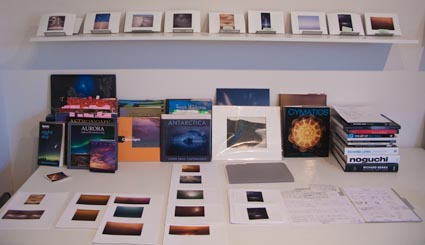
How do you live with your images? You make a lot of them. 1% get finished. Some become used in projects – slideshows, exhibits, books, etc. But, day to day, how do you revisit our images?
Website (gallery or splashpage)?
Online social network (Flickr or other)?
Computer desktop?
Printed contact sheets?
Post up boards (refrigerator or bulletins)?
Single prints?
Portfolios?
Print exhibits (in house/studio or offsite)?
Desktop calendar?
Greeting cards?
Posters?
Books (published or self-published)?
Give yourself many ways to look at and interact with your work – frequently. You’ll come to understand it better. Ways to improve it will become clear. New ideas will come to light.
How many other ways can you think of? Comment here!
Check out my Creativity workshops here.
One of the most creative voices in photography. Period.
If you don’t have time for the full 30 minutes, skip to 6:00.
Find more artist’s videos by typing video into the Search field.
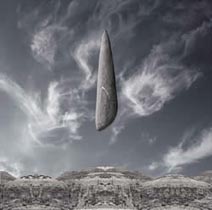
Edge was critical throughout the entire process of composing Triple Goddess. First there was contour. What shape would the stone finally take? The original had been buried in sand. The stone was far too large to dig out, so I cut away the background that threatened to envelop it. This made certain determinations of shape. It may even have been the shape the sand made out of the stone that first attracted me to it. Had I seen the entire stone I might not have been so drawn to it. To date I have no idea what the full stone looks like, as I was only able to see a portion of it …
Read the rest here.
Read more statements and see more images here.

